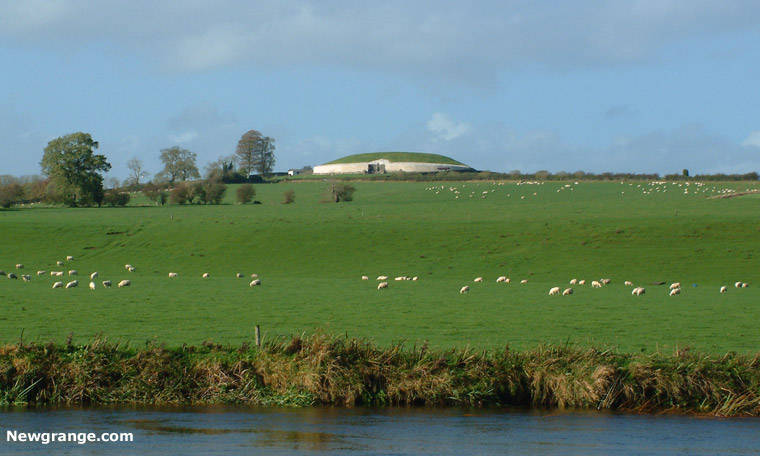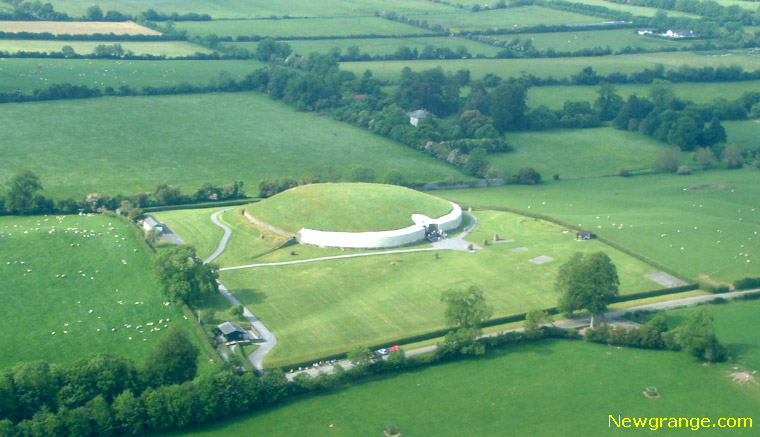Newgrange and the Boyne Valley Day Tours
Private Hire Boyne Valley Day Tour
Looking for an adventure into the rich heritage and history of the Boyne Valley? Explore County Meath and County Louth with a Private Day Tour from Boyne Valley Tours. Whether you prefer a recommended tour or a customized experience, our tours offer an array of fascinating destinations.Discover the Meath megalithic monuments at Newgrange, Knowth and Dowth, explore Fourknocks, marvel at the high crosses at Monasterboice, and witness the grandeur of Trim Castle. Immerse yourself in the legends of the Hill of Tara and the Hill of Slane, explore the grounds of Slane Castle, or visit the historic site of the Battle of the Boyne. With so many incredible heritage sites, castles, and ancient ruins to choose from, the adventure is just waiting for you!
Make your touring experience truly one-of-a-kind with our personalized tours! We'll pick you up from your accommodation or cruise ship in the Meath, Louth, or Dublin area, ensuring that you can explore the Boyne Valley in comfort and style. You'll be transported in either a Skoda Superb Sedan or a luxurious Mercedes MVP, providing you with the perfect vehicle to suit your needs. No need to worry about logistics or transportation - we've got you covered!
Day Tours by Bus from Dublin
Mary Gibbons runs an excellent bus tour of Newgrange and the Hill of Tara. There are a number of convenient pickup points in Dublin city. The Tour runs daily, price of 75 Euro covers access to the actual Newgrange monument.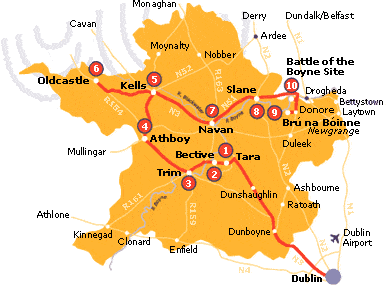
Meath Heritage Sites
1. Tara2. Bective
3. Trim Castle
4. Hill of Ward
5. Kells
6. Loughcrew
7. Navan
8. Slane
9. Newgrange & Knowth
10. Battle of the Boyne
Brú na Bóinne Visitors Centre
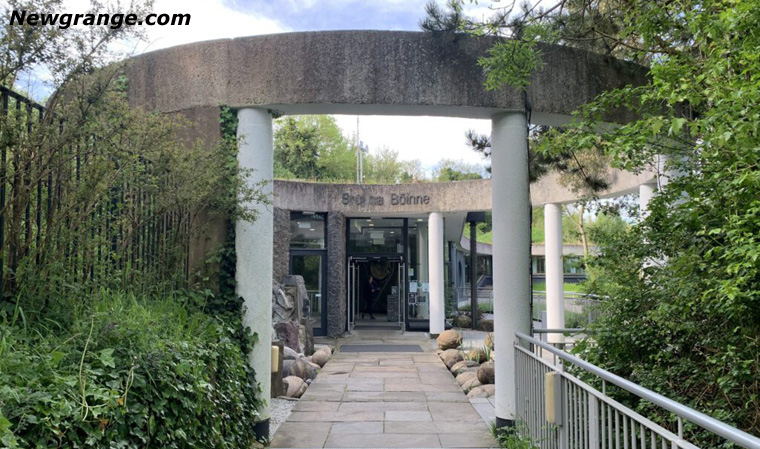 The Brú na Bóinne Visitor Centre is the starting point for a visit to Newgrange and Knowth.
Access to the actual sites is only available through a shared guided tour with the onsite guides.
This applies to visitors arriving by their own transport or on a private tour.
The Brú na Bóinne Visitor Centre is the starting point for a visit to Newgrange and Knowth.
Access to the actual sites is only available through a shared guided tour with the onsite guides.
This applies to visitors arriving by their own transport or on a private tour.
The first step in planning a visit is to book tickets online. Tickets are available 30 days in advance, the Brú na Bóinne Tour visiting Newgrange and Knowth takes about 3 hours. The Newgrange only tour takes about 2 hours.
Private Hire Boyne Valley Day Tour
Embark on an unforgettable journey with our Private Hire Boyne Valley Day Tour from Dublin, a bespoke experience designed to immerse you in the rich tapestry of Ireland's ancient history, stunning landscapes, and charming villages.Exclusive Transportation
Enjoy the luxury of a private vehicle for you and your group, ensuring a comfortable and personalized journey through the historic and picturesque Boyne Valley.Historical Wonders
Step back in time as you explore the renowned Brú na Bóinne UNESCO World Heritage Site, home to the prehistoric wonders of Newgrange and Knowth. Marvel at these ancient passage tombs, older than Stonehenge and the Great Pyramids of Giza.Trim Castle
Uncover the secrets of Trim Castle, one of the largest Norman castles in Ireland and a backdrop for scenes from the iconic film "Braveheart." Discover the medieval charm of this historic fortress and its picturesque surroundings.Majestic Landscapes
Traverse the enchanting landscapes of the Boyne Valley, adorned with lush greenery, rolling hills, and the meandering River Boyne. Capture the essence of Ireland's natural beauty at every turn.Village Charm
Immerse yourself in the welcoming atmosphere of charming Slane village along the way. Experience the warmth of local hospitality, indulge in traditional cuisine, and explore hidden gems that only a personalized tour can unveil.Flexible Itinerary
Tailor your day to suit your interests and preferences. Whether you're a history enthusiast, a nature lover, or a culture seeker, our private tour allows you the flexibility to curate your own adventure.Expert Guide
Benefit from the insights and knowledge of our experienced local guide who will regale you with captivating stories, historical facts, and anecdotes, bringing the Boyne Valley's past and present to life.Comfort and Convenience
Relax and enjoy the journey as we take care of all the logistics. Our private hire tour ensures a seamless experience, allowing you to focus on creating lasting memories.Make your day in the Boyne Valley truly extraordinary with our Private Hire Day Tour from Dublin, a personalized and enchanting exploration of Ireland's captivating heritage and natural beauty. Book now for a day filled with discovery, relaxation, and the magic of the Emerald Isle.
Boyne Valley Private Day Tour
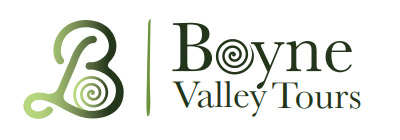 Immerse yourself in the rich heritage and culture of the Boyne Valley with our full-day private tours.
Visit Newgrange World Heritage site, explore the Hill of Slane, where Saint Patrick famously lit the Paschal fire.
Discover the Hill of Tara, the ancient seat of power for the High Kings of Ireland.
Book Now
Immerse yourself in the rich heritage and culture of the Boyne Valley with our full-day private tours.
Visit Newgrange World Heritage site, explore the Hill of Slane, where Saint Patrick famously lit the Paschal fire.
Discover the Hill of Tara, the ancient seat of power for the High Kings of Ireland.
Book Now

Home
| Visitor Centre
| Tours
| Winter Solstice
| Solstice Lottery
| Images
| Local Area
| News
| Knowth
| Dowth
| Articles
| Art
| Books
| Directions
| Accommodation
| Contact


